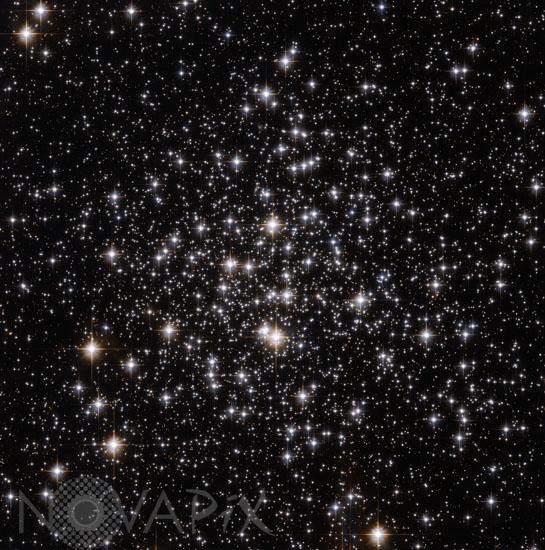Photo Agency - Astronomy - Space - Nature

Globular cluster M71 in Sagitta
author: Nasa/Esa/Novapix
reference: a-agb68-38001
Image Size 300 DPI: 34 * 34 cm
This NASA/ESA Hubble Space Telescope image shows a bright scattering of stars in the small constellation of Sagitta (the Arrow). This is the centre of the globular cluster Messier 71, a great ball of ancient stars on the edge of our galaxy around 13 000 light-years from Earth. M71 is around 27 light-years across. Globular clusters are like galactic suburbs, pockets of stars that exist on the edge of major galaxies. These clusters are tightly bound together by their gravitational attraction, hence their spherical shape and their name: globulus means âlittle sphereâ in Latin.
Around 150 such globular clusters are known to exist around our Milky Way, each one of them containing several hundred thousand stars.
Despite being a familiar object, Messier 71âs precise nature was disputed until recently. Was it simply an open cluster, a loosely bound group of stars? This was for many years the dominant view. But in the 1970s, astronomers came to the view that it is in fact a relatively sparse globular cluster. The stars in Messier 71, as is usual in such clusters, are relatively old, at around 9 to 10 billion years, and consequently are low in elements other than hydrogen and helium.
Keywords for this photo:
2010 - ACS - ASTRONOMY - GLOBULAR CLUSTER - HST - HUBBLE SPACE TELESCOPE - M71 - NGC 6838 - SAGITTA - STAR - STAR CLUSTER - TWINKLING -
Contact : Stéphane Aubin +33-(0)9-51-26-53-76
© Novapix - All rights reserved


